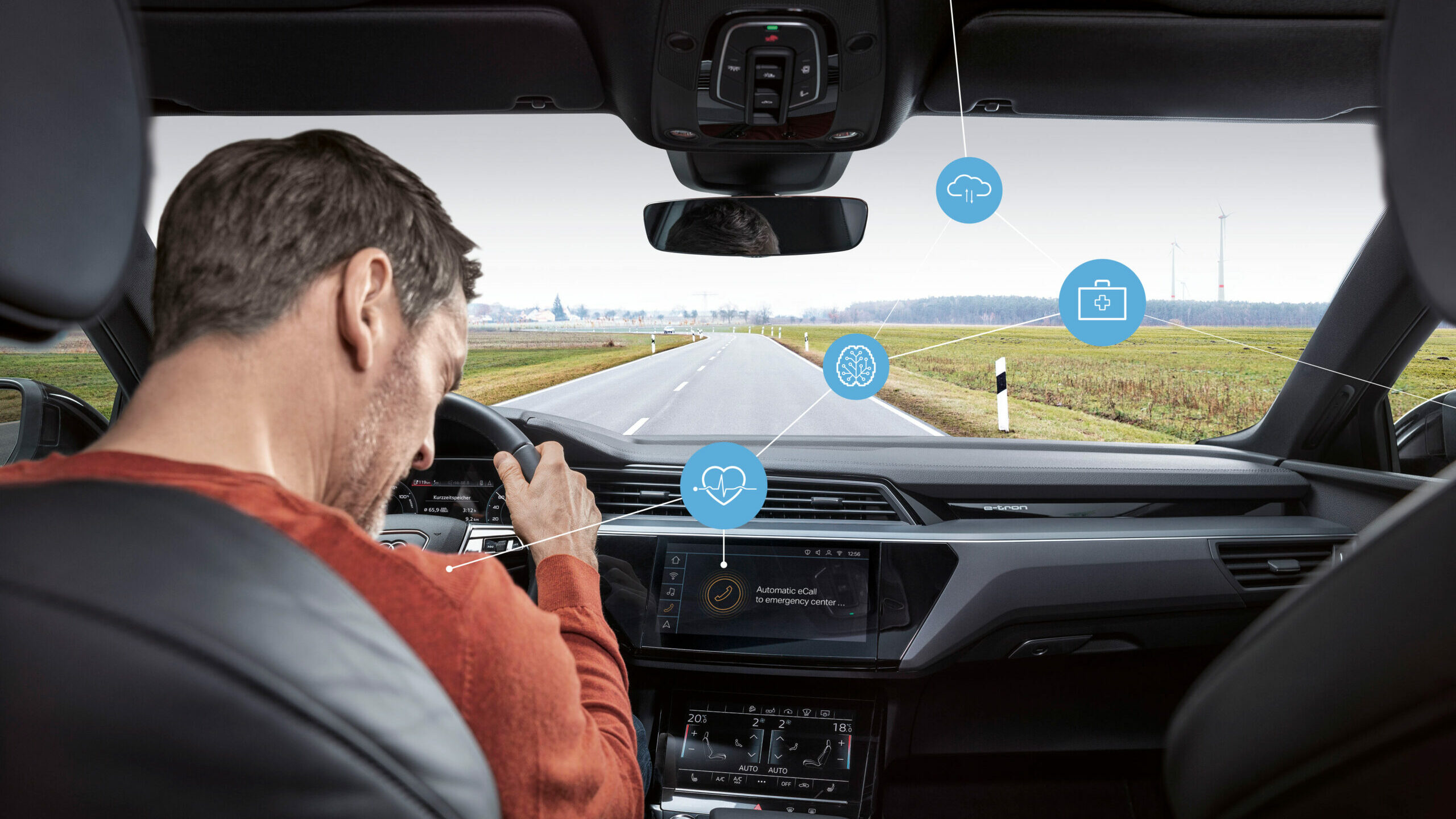
From lane-keeping systems to parking aids and attention assistants, there are plenty of safety systems in modern cars designed to make driving safer for drivers and passengers. And there are more and more of them. But one thing is still missing: a system that monitors the driver’s health status and can intervene in an emergency, call for help and bring the vehicle to a safe stop. At the same time, however, the average age of drivers is rising and with it the risk of emergencies behind the wheel due to illness.
Scientists at engineering specialist IAV (Ingenieurgesellschaft Auto und Verkehr) and the University of Oldenburg, Germany, have now developed a digital assistant that can prevent dangers due to such emergencies and also make it easier for people with pre-existing conditions to use their cars. It monitors the driver’s health status, detects changes ranging from shortness of breath to a heart attack and automatically initiates rescue measures in an emergency.
A modular system
“Existing assistance systems such as drowsiness or emergency assist programs know virtually nothing about the driver’s health status,” says Mark Busse, head of the Connected Systems Integration department at IAV. “As a result, they do not intervene or intervene too late in health emergencies. With the health assistant we have developed, we put both the driver’s vital data and deviations from individual driving behavior at the heart of the decision as to whether and to what extent the vehicle intervenes.”
Under the name “The Car That Cares,” IAV and the University of Oldenburg have already successfully tested this digital health assistant in a commercial passenger car. In the process, researchers from Oldenburg University assisted their IAV colleagues with sensor technology, the detection of medical emergencies and the evaluation of medical devices.
The safety system has a modular design. So far, it consists of a certified chest strap that records pulse and breathing rate and AI-supported IAV software. This is complemented by an intelligent and secured IAV cloud infrastructure. In this cloud, an IAV-developed AI analyzes health and vehicle data from which it creates a digital driver profile, transmitting relevant threshold values to the vehicle.
System independently calls for help
If the software detects deviations from the norm in the driver’s data that potentially pose a safety risk, the vehicle’s assistance and automation functions are activated. The machine learning algorithms are trained to detect on- and offline anomalies in the driver’s health, the researchers say. These would include mild to severe impairment and emergencies such as respiratory distress, heart attack or loss of consciousness.
“The system responds both consistently and appropriately to the situation. In case of mild respiratory distress, for example, the system warns the driver via the infotainment system and, if necessary, activates the lane assistant and reduces the speed of the vehicle,” says Jens Schulze – Head of Department Data Analytics & Fleet Validation at IAV. “In the event of an emergency such as a heart attack or even a loss of consciousness, the vehicle comes to a safe stop at the side of the road and places an eCall.” But the driver has the option at any time to intervene to stop any measures that have been initiated, he adds.
For new vehicles and for retrofitting
The system consisting of a chest strap, software and cloud connection can be integrated into new vehicles as well as into the existing software architecture of modern production vehicles. This also applies to commercial vehicles, the developers say. “The Car That Cares could monitor the vital signs of truck and bus drivers, alert them to critical changes – and bring the vehicles, which weigh tons, to a safe stop in an emergency.”
Over time, there are also plans to integrate other measurement systems and sensors such as those that determine oxygen saturation and sugar levels. The secured data infrastructure can be flexibly designed in the process and adapted to the data protection regulations of the respective country.
Also interesting:
‘RadarGlass’ – car headlights are becoming radar sensors
HORIS: Better protection for pedestrians when using autonomous vehicles
3D radar sensors enable autonomous driving without blind spots

